Abstract
A kombucha is a tea and sugar fermented by over sixty kinds of yeasts and bacteria. This symbiotic community produces kombucha mats, which are cellulose-based hydrogels. The kombucha mats can be used as an alternative to animal leather in industry and fashion once they have been dried and cured. Prior to this study, we demonstrated that living kombucha mats display dynamic electrical activity and distinct stimulating responses. For use in organic textiles, cured mats of kombucha are inert. To make kombucha wearables functional, it is necessary to incorporate electrical circuits. We demonstrate that creating electrical conductors on kombucha mats is possible. After repeated bending and stretching, the circuits maintain their functionality. In addition, the abilities and electronic properties of the proposed kombucha, such as being lighter, less expensive, and more flexible than conventional electronic systems, pave the way for their use in a diverse range of applications.
Introduction
Kombucha is fermented by a symbiotic community of bacteria and yeasts1,2,3,4,5. The symbiotic culture of bacteria and yeasts produces a cellulose-based hydro-gel, also known as bacterial cellulose, biofilm, commensal biomass, tea-fungus, scoby and zooglea. A tea fermented by the symbiotic community allegedly exhibits a range of health beneficial properties2,6,7, however these will not be discussed in the present work.
Kombucha mats are unique symbiotic systems where over sixty species of yeasts and bacteria cooperate1. A kombucha is an example of a proto-multicellularity—an organism combined of multiple species each one pursuing a common goal of prolonging a life time of the collective organism. Electrical properties of kombucha mats, firstly uncovered in8, can further advance ideas on electricity based integration, and possibly, protocognition of symbiotic organisms9,10,11,12. Similar bacterial cellulose mats, for example, produced by Acetobacter aceti colonies, have been shown to feature interesting electrical properties and pressure sensing capabilities13.
Kombucha mats, when properly cured, show properties similar to textiles14,15,16,17,18,19, and might make a competitive alternative to fungal leather and wearables20,21.
Wearables made of kombucha, while not a commonly known concept, could potentially offer several benefits. Kombucha forms a cellulose-based mat on the surface. This cellulose material has unique properties that make it a promising candidate for wearable technology. Here are some reasons why wearables made of kombucha could be important:
-
Sustainability: Kombucha wearables could be more sustainable compared to traditional wearable materials. The cellulose-based material is biodegradable, renewable, and can be grown using simple ingredients like tea and sugar. It has the potential to reduce the environmental impact associated with the production and disposal of traditional wearables made from synthetic materials.
-
Biocompatibility: The cellulose material derived from kombucha is generally biocompatible, meaning it is less likely to cause adverse reactions when in contact with human skin. This makes it a potentially suitable material for individuals with sensitive skin or allergies.
-
Customizability: The kombucha material can be molded into various shapes and sizes during its growth process, allowing for customized wearables that can conform to individual body shapes and needs. This flexibility could lead to improved comfort and performance.
-
Breathability and Moisture Management: Kombucha-based wearables have the potential to be highly breathable, allowing air circulation and reducing moisture buildup on the skin. This property could be beneficial for athletic wear or other applications where moisture management is important. Moreover, water uptake of kombucha will have effects on the increasing of kombucha bulk conductivity; the adhesion to skin is also increased after sweat absorption, making possible self-adhesion patches made of vegetable materials.
-
Sensor Integration: Kombucha wearables could potentially incorporate sensors and electronics within the material itself, providing a seamless and unobtrusive integration of technology with the human body. This could open up new possibilities for monitoring health metrics, tracking movement, or providing haptic feedback.
It’s worth noting that while the concept of wearables made of kombucha holds promise, it is still an emerging area of research and development. Challenges related to durability, scalability, and mass production would need to be addressed before such wearables become commonplace. However, the potential for sustainability and unique material properties make kombucha wearables an intriguing prospect for the future.
In a light of ongoing research on sensing and computing mechanisms embedded in living wearables22,23,24,25 we aim to evaluate kombucha zoogleal mats as potentially embeddable cyber-physical wearable devices with non-linear and non-trivial electrical properties. To achieve the aim we test if basic components of the electrical circuits could made on dry kombucha mats.
Modern electrical circuits require reliable electrical connections between electronic components (including sensors) and external signals for their construction and continued operation26,27,28. Printed circuit boards (PCBs) are typically constructed from silkscreen, solder mask, copper, and substrate29,30. Material selection is crucial to the successful operation of printed circuit boards, especially thermal behaviour. The majority of PCB substrates fall into one of two categories: hard/rigid or soft/flexible. Ceramic-based materials typically provide excellent thermal conductivity, good dielectric properties, a high operating temperature, and a low expansion coefficient. The most popular rigid material is FR-4, a glass-reinforced epoxy laminate that is both inexpensive and versatile31,32. Above a few GHz, the substantial dielectric loss (dissipation factor) of FR-4 renders it unsuitable for high-speed digital or high-frequency analogue circuits33,34.
PCBs for wearables should be be mechanically flexible, waterproof, and shockproof and by default light35,36,37,38,39. Traditionally they are plastic based although they typically lack sustainability and cost-effectiveness. Polymeric soft materials offer superior resistance to stretching, bending and washing cycles40. Moreover, wearables are intended to interact closely with their wearer, therefore bio-compatibility is advantageous, or at least resistance to the active chemical environment offered by the human skin. Therefore, the combination of bio-based PCBs and biodegradable components (including ICs) is especially advantageous for wearables.
Results
Kombucha mats are proven to be robust to tearing, and are not destroyed even by immersion in water for several days. The mat survived oven temperature up to 200C but burn when exposed to open flame. We have demonstrated that it possible to (1) precisely cut kombucha mats with laser, (2) aerosol jet print PODOT:PSS circuits on kombucha mats, (3) 3D printing TPU and metal-polymer composite on kombucha mats, (4) draw conductive tracks and arrange functional elements with conductive paints.
Kombucha mats cut with laser cutter (a) letters and holes of different sizes, (b) nominal 1 mm hole cut to \(\sim\)1.1 mm diameter with \(\sim\)25 W laser power, (c) nominal 1 mm hole cut to \(\sim\)1.0 mm diameter with \(\sim\)18 W laser power, (d) nominal 1 mm holes only partly cut out to \(\sim\)1.0 mm diameter with \(\sim\)10 W laser power.
Laser cutting proved to be a problem free procedure. Exemplars of kombucha mats cut with laser cutter are shown in Fig. 1. The laser settings (e.g. speed of motion, beam power and number of laser pulses per inch) were found to be critical to accurate cutting. The optimal setting for 0.45 ± 0.1 mm thickness was found to be 80 inches per second, \(\sim\)18 W, and 500 pulses per inch, as shown in Fig. 1c. If the beam power is raised above optimal level the cut becomes wider than desirable, as shown in Fig. 1b. Conversely, if the beam power is lower than optimal level the mat is only partly cut through, as shown in Fig. 1d. With optimised settings, kombucha mats were found to cut well with minimal smoke. Some cut sections needed to be agitated free for removal.
Organic electrical conductors have been printed by Aerosol Jet Printing (AJP) with the aim of creating circuits over kombucha mats, exploited as potential substrates in wearable electronics. Circuits over kombucha can act in perspective as sensors or biosensors, coupled also with printed antennas for wireless data communication and storing in clouds. Herein, we are going to explore basic properties of printed traces over the surface of kombucha.
Aerosol Jet Printing is particularly suitable for printing over irregular surfaces, flexible and/or stretchable substrates made of natural materials (bio-polymers) because of it operates in non-contact mode at a fixed distance from the substrate. Basic principles and mechanisms of AJP techniques have been discussed in literature41,42,43,44. This technology belongs to the additive manufacturing sector and offers advantages with respect to other well known technologies and broadly distributed, such as ink jet printing (normally referred to liquid inks jetted using thermal or piezoelectric nozzles45).
A highly conductive formulation of PEDOT:PSS was used as ink: 2mL of ink was uploaded in the ultrasonic atomiser of AJP 200, by setting the gas flows at 30 and 25 sccm for the atomiser and sheath gas, respectively. A 200 um size nozzle was mounted on the printed head. The printing run was operated on cool-conditions to avoid exposure of kombucha to heat treatments. Elementary circuit elements were printed firstly, 3 circular electrodes (2 mm diameter) at a fixed distance, acting as the working, counter and reference electrodes, for the evaluation of impedance of the electrode-kombucha interface, by Impedance Electrochemical Spectroscopy (EIS) analysis.
Exemplars of deposition of PEDOT:PSS circuits and measurements of electrical properties (a) PEDOT:PSS round pads at a fixed distance from each other with interconnecting tracks (b) Aerosol Jet Printing nozzle (c) defined gap between tracks (d) spring loaded electrodes on PEDOT:PSS pads (e) spring loaded electrodes on surface of kombucha (f) hydration of PEDOT:PSS.
Exemplars of deposition of PEDOT:PSS circuits and measurements of electrical properties are shown in Fig. 2. The figure shows the acquired data of EIS over (1) three free points over the kombucha surface; (2) three PEDOT:PSS electrodes used as the working (RE), counter (CE) and reference (RE) electrodes, placed at fixed distances and the same as the free points of (1); (3) the same measurements of (2) after hydration, where hydration was performed by placing 20 \(\upmu L\) of water drops in the surrounding area of the electrodes over the kombucha surface. Being kombucha a cellulose-based material, it is very sensitive to water absorption, and up-taking water in the kombucha backbone make the kombucha foil more conductive. Impedance measurements increase almost instantly after water dropping, and stabilise quickly; the measurements after 30 min after water dropping show a more stable signal. Electrical properties of kombucha mat with and without PEDOT:PSS circuits are shown in Fig. 3.
Exemplar of tracks of TPU (with 15% carbon infill) 3D printed on kombucha mat are shown in Fig. 4. Track resistance of TPU (with 15% carbon infill) and Electrifi (metal-polymer composite—biodegradable polyester and copper) was found to vary with width and thickness,as summarised in Table 1. Tracks of 100 mm length were measured with LCR meter (891, BK Precision, UK). Flexibility of the tracks was found to vary with thickness. The performance of each manufacturing method is linked to capabilities of the constituent material(s) used. For example, TPU is a flexible elastomer that offers high mechanical strength, good chemical resistance, and excellent abrasion resistance. Furthermore, TPU has a strong adherence to a variety of substrates and may be easily processed utilising a variety of techniques such as injection moulding and extrusion. By mixing with carbon it can become electrically conductive. However, the electrical conductivity of TPU remains lower than desirable despite carbon loading. Conversely, Electrifi has good electrical conductivity but poorer mechanical properties. Silver-loaded inks provide acceptable conductivity for some applications, excellent adhesion to a variety of substrates, and a modest cost. However, there are some drawbacks to using silver-loaded inks, such as the tendency to oxidise when exposed to air, resulting in a decrease in conductivity over time. Despite these drawbacks, silver-loaded ink remains a popular choice for printed electronics due to its ease of processing and printing. Furthermore, progress has been made in developing silver nanoparticle-based ink with improved electrical conductivity that can be used in a variety of applications such as biosensors and stretchable electronics.
Both TPU and Electrifi tracks remained attached to kombucha after a couple of days of immersion in water. Their attachment might be ’mechanical’ rather than chemical as the liquid (melted) polymers are effectively ’injected’ into/onto the surface of kombucha effectively filling any surface irregularities which then act as ’grips’ holding track in position. The formulation of flexible and stretchable inks is an active area of research where many efforts are in progress. New experimental metal inks formulations with stretchable and flexible properties have been proposed recently, applied in inkjet and aerosol jet printing. Tracks printed with these new inks would have the potential to adapt and follow the stretching and bending of the underneath substrates. We are in progress to test some of these new formulation and to make home-made inks as well.
With regards to electrically conductive paint, experiments demonstrated that ‘Bare Conductive’46 adheres well to the kombucha mats and sustains some degree of flexibility. Typical electrical conductivity for tracks is shown in Fig. 5. Track resistance of the conductive paint tracks on kombucha mats varied between 20 \(\Omega \hbox {cm}^{-1}\) to 200 \(\Omega \hbox {cm}^{-1}\). These values roughly align with the ‘Bare Conductive’ data-sheet46 with ‘thick’ tracks. Track resistance of XD-120 conductive silver ink on kombucha mat was also found to vary. Typical range 1.5 \(\Omega \hbox {cm}^{-1}\) to 10 \(\Omega \hbox {cm}^{-1}\)
Discussion
Four technologies for manufacturing kombucha based PCBs were explored aerosol jet printing of PODOT:PSS, 3D printing of TPU and metal-polymer composite, adding ink with conductive filler and laser cutting. Each offered advantages and disadvantages compared to other technologies.
As demonstrated in Fig. 6, it is feasible to construct electrical circuits on kombucha mats. Two track widths (\(\sim\)3 and \(\sim\)5 mm) and two packages (3020 and 5050) of surface mount devices (SMD) are displayed. A silver-loaded, conductive, two-part epoxy (Chemtronics CW240047) was manually applied to mechanically attach and electrically connect SMDs to polymer tracks. For volume manufacture, SMDs would be automatically mounted using a pick and place machine and conductive epoxy precisely and automatically dispensed with in-line dispensers.
Two potential methods of forming cross connections on kombucha mats via 3D printing of conductive material—single sided cross-over bridges and through-hole double sided via laser hole cutting—are illustrated Fig. 7.
Kombucha mats show properties that can be exploited to envision potential and future kombucha-based devices. The hydration-dependent electrical conduction of kombucha allows to extend the potential operational frequency range of surface-electrodes over kombucha mats, as well as to exploit the kombucha mat as a resistive switching device in a planar electro-chemical cell. High-quality kombucha mat production necessitates quality control measures to ensure purity and consistency. One of the most important quality control measures for bacterial cellulose production is ensuring that the culture medium used for production is free of contaminants. Contaminants can have a significant impact on the quality of bacterial cellulose, resulting in inconsistent results. Another important quality control measure is the use of standardised protocols for bacterial cellulose harvesting and purification. This includes monitoring the pH, temperature, and bacterial growth during the manufacturing process. Quality of the kombucha mats produced can be controlled by adjusting liquid temperature and concentration of nutrients, following published protocols48,49,50.
Future research will be concerned with printing advanced functional circuits, capable for detecting, and may be recognising, mechanical, optical and chemical stimuli, implementing sensorial fusion and distributed information processing.
Methods and materials
The kombucha zooglea was commercially sourced (Freshly Fermented Ltd, UK) to grow mats of kombucha in situ. The infusion was prepared as follows; 2% tea (PG Tips, UK), 5% sugar (Silver Spoon, UK), and 1 L of boiled mains water. Containers with kombucha (Fig. 8) were stored at ambient temperature (20–23\(\,^{\circ }\)C) in darkness. The solution was refreshed each week. Kombucha mats were removed from the cultivation container and air-dried on plastic or paper at ambient temperature (several techniques were tried).
Four manufacturing technologies to add conductive tracks, attaching electronic components, and cut profiles of kombucha mats were explored.
Aerosol jet printing of PODOT:PSS was implemented as follows. Organic-based electrodes and interconnecting lines were printed by Aerosol Jet Printing (AJP200, Optomec, US51) by using an a highly-conductive inkjet formulation of PEDOT:PSS (Clevios P JET N V2, Heraeus, US52). Printing parameters were optimised for achieving conductive traces over the surface of kombucha mats used as the substrate. Electrochemical measurements were performed by a potentiostat (PalmSens4, PalmSens BV, NL53).
To 3D print TPU with 15% carbon infill and metal-polymer composite—biodegradable polyester and copper—two compositions of filament (2.85 mm diameter) were hot extruded onto kombucha mats via 0.4 mm nozzle on 3D printer (S5, Ultimaker, UK54). The composition filaments were ‘Conductive Filaflex Black’ rated 3.9 \(\Omega \hbox {cm}^{-1}\)55 and ‘Electrifi Conductive Filament’ rated 0.006 \(\Omega \hbox {cm}^{-1}\)56.
Conductive pathways were drawn onto kombucha mats with two compositions of conductive ink, including ‘Bare Conductive’ rated 55 \(\Omega \hbox {sq}^{-1}\) at 50 \({\upmu }\hbox {m}\) thickness57 and ‘XD-120 conductive silver ink’ rated rated 0.00003 \(\Omega \hbox {cm}^{-1}\)58.
When shaping was involved, kombucha mats of \(0.45{\pm 0.1}\) mm thickness were cut with 75 W CNC laser cutter (Legend 36EXT, Epiloglasers, US,59) while parameters (speed of motion, beam power, pulses per inch) were adjusted to determine the optimal settings.
Data availability
The raw data-sets obtained in this study are available from the corresponding author on reasonable request.
References
-
May, A. et al. Kombucha: A novel model system for cooperation and conflict in a complex multi-species microbial ecosystem. PeerJ 7, e7565 (2019).
-
Coelho, R. M. D. et al. Yeast ecology of kombucha fermentation. Int. J. Gastron. Food Sci. 22, 100272 (2020).
-
Teoh, A. L., Heard, G. & Cox, J. Yeast ecology of kombucha fermentation. Int. J. Food Microbiol. 95, 119–126 (2004).
-
Kurtzman, C. P., Robnett, C. J. & Basehoar-Powers, E. Zygosaccharomyces kombuchaensis, a new ascosporogenous yeast from ‘kombucha tea’. FEMS Yeast Res. 1, 133–138 (2001).
-
Jarrell, J., Cal, T. & Bennett, J. The kombucha consortia of yeasts and bacteria. Mycologist 14, 166–170 (2000).
-
Vargas, B. K., Fabricio, M. F. & Ayub, M. A. Z. Health effects and probiotic and prebiotic potential of kombucha: A bibliometric and systematic review. Food Biosci. 44, 101332 (2021).
-
Ivanišová, E. et al. The evaluation of chemical, antioxidant, antimicrobial and sensory properties of kombucha tea beverage. J. Food Sci. Technol. 57, 1840–1846 (2020).
-
Adamatzky, A. Electrical potential spiking of kombucha zoogleal mats: A symbiotic community of bacteria and yeasts. Bioelectricity https://doi.org/10.1089/bioe.2022.0030 (2022).
-
Levin, M. Molecular bioelectricity in developmental biology: New tools and recent discoveries: Control of cell behavior and pattern formation by transmembrane potential gradients. BioEssays 34, 205–217 (2012).
-
Levin, M. Molecular bioelectricity: How endogenous voltage potentials control cell behavior and instruct pattern regulation in vivo. Mol. Biol. Cell 25, 3835–3850 (2014).
-
Levin, M. The computational boundary of a “self’’: Developmental bioelectricity drives multicellularity and scale-free cognition. Front. Psychol. 10, 2688 (2019).
-
Levin, M. Bioelectric signaling: Reprogrammable circuits underlying embryogenesis, regeneration, and cancer. Cell 184, 1971–1989 (2021).
-
Chiolerio, A. & Adamatzky, A. Acetobacter biofilm: Electronic characterization and reactive transduction of pressure. ACS Biomater. Sci. Eng. 7, 1651–1662 (2021).
-
Wood, J. Are microbes the future of fashion? Microbiologist 18(2), (2017).
-
Laavanya, D., Shirkole, S. & Balasubramanian, P. Current challenges, applications and future perspectives of scoby cellulose of kombucha fermentation. J. Clean. Prod. 295, 126454 (2021).
-
Domskiene, J., Sederaviciute, F. & Simonaityte, J. Kombucha bacterial cellulose for sustainable fashion. Int. J. Cloth. Sci. Technol. 31, 644–652 (2019).
-
Betlej, I., Salerno-Kochan, R., Krajewski, K. J., Zawadzki, J. & Boruszewski, P. The influence of culture medium components on the physical and mechanical properties of cellulose synthesized by kombucha microorganisms. BioResources 15, 3125–3135 (2020).
-
Kamiński, K. et al. Hydrogel bacterial cellulose: A path to improved materials for new eco-friendly textiles. Cellulose 27, 5353–5365 (2020).
-
Minh, N. T. & Ngan, H. N. Vegan leather: An eco-friendly material for sustainable fashion towards environmental awareness. In AIP Conference Proceedings, vol. 2406, 060019 (AIP Publishing LLC, 2021).
-
Manan, S. et al. Applications of fungal mycelium-based functional biomaterials. In Fungal Biopolymers and Biocomposites: Prospects and Avenues, 147–168 (Springer, 2022).
-
Gandia, A., van den Brandhof, J. G., Appels, F. V. & Jones, M. P. Flexible fungal materials: Shaping the future. Trends Biotechnol. 39, 1321–1331 (2021).
-
Adamatzky, A., Gandia, A. & Chiolerio, A. Towards fungal sensing skin. Fungal Biol. Biotechnol. 8, 1–7 (2021).
-
Adamatzky, A., Nikolaidou, A., Gandia, A., Chiolerio, A. & Dehshibi, M. M. Reactive fungal wearable. Biosystems 199, 104304 (2021).
-
Chiolerio, A., Dehshibi, M. M., Manfredi, D. & Adamatzky, A. Living wearables: Bacterial reactive glove. Biosystems 218, 104691 (2022).
-
Nikolaidou, A., Phllips, N., Tsompanas, M.-A. & Adamatzky, A. Reactive fungal insoles. bioRxiv (2022).
-
Whitaker, J. C. The Electronics Handbook (Crc Press, 2018).
-
Wilamowski, B. M. & Irwin, J. D. Fundamentals of Industrial Electronics (CRC Press, 2018).
-
Maini, A. K. Handbook of defence electronics and optronics: Fundamentals, technologies and systems (Wiley, 2018).
-
Jillek, W. & Yung, W. Embedded components in printed circuit boards: A processing technology review. Int. J. Adv. Manuf. Technol. 25, 350–360 (2005).
-
Zheng, L. et al. A review on drilling printed circuit boards. Adv. Mater. Res. 188, 441–449 (2011).
-
Mumby, S. J. An overview of laminate materials with enhanced dielectric properties. J. Electron. Mater. 18, 241–250 (1989).
-
Ehrler, S. Properties of new printed circuit board base materials. Circuit World 28, 38–45 (2002).
-
Mumby, S. J. & Yuan, J. Dielectric properties of fr-4 laminates as a function of thickness and the electrical frequency of the measurement. J. Electron. Mater. 18, 287–292 (1989).
-
Djordjevic, A. R., Biljié, R. M., Likar-Smiljanic, V. D. & Sarkar, T. K. Wideband frequency-domain characterization of fr-4 and time-domain causality. IEEE Trans. Electromagn. Compat. 43, 662–667 (2001).
-
Liu, H. et al. Printed circuit board integrated wearable ion-selective electrode with potential treatment for highly repeatable sweat monitoring. Sens. Actuators B Chem. 355, 131102 (2022).
-
Kao, H.-L.C., Bedri, A. & Lyons, K. Skinwire: Fabricating a self-contained on-skin pcb for the hand. Proc. ACM Interact. Mobile Wearable Ubiquitous Technol. 2, 1–23 (2018).
-
Tao, X. et al. How to make reliable, washable, and wearable textronic devices. Sensors 17, 673 (2017).
-
Vieroth, R. et al. Stretchable circuit board technology and application. In 2009 International Symposium on Wearable Computers, 33–36 (IEEE, 2009).
-
Buechley, L. & Eisenberg, M. Fabric pcbs, electronic sequins, and socket buttons: Techniques for e-textile craft. Pers. Ubiquit. Comput. 13, 133–150 (2009).
-
Stoppa, M. & Chiolerio, A. Wearable electronics and smart textiles: A critical review. Sensors 14, 11957–11992 (2014).
-
Tarabella, G. et al. Aerosol jet printing of pedot:pss for large area flexible electronics. Flex. Print. Electron. 5, 014005 (2020).
-
Secor, E. B. Principles of aerosol jet printing. Flex. Print. Electron. 3, 035002 (2018).
-
Wilkinson, N., Smith, M., Kay, R. & Harris, R. A review of aerosol jet printing-a non-traditional hybrid process for micro-manufacturing. Int. J. Adv. Manuf. Technol. 105, 4599–4619 (2019).
-
Mette, A., Richter, P., Hörteis, M. & Glunz, S. Metal aerosol jet printing for solar cell metallization. Prog. Photovolt. Res. Appl. 15, 621–627 (2007).
-
Scalisi, R. et al. Inkjet printed flexible electrodes for surface electromyography. Org. Electron. 18, 89–94 (2015).
-
Ltd, B. C. Electric paint. technical data sheet (2017). Last accessed 13 December 2022.
-
Chemtronics. Chemtronics cw2400 liquid adhesive. https://uk.rs-online.com/web/p/adhesives/0496265. Accessed 10-Jan-2023.
-
Dutta, D. & Gachhui, R. Nitrogen-fixing and cellulose-producing gluconacetobacter kombuchae sp. nov., isolated from kombucha tea. Int. J. Syst. Evol. Microbiol. 57, 353–357 (2007).
-
Sayers, M. J., Derafshi, M. & Hsiao, P. Y. Drink and wear kombucha? A sustainable approach to fashion. In International Textile and Apparel Association Annual Conference Proceedings, vol. 79 (Iowa State University Digital Press, 2022).
-
Amarasekara, A. S., Wang, D. & Grady, T. L. A comparison of kombucha scoby bacterial cellulose purification methods. SN Appl. Sci. 2, 1–7 (2020).
-
Optomec. Aerosol jet 200. chrome-extension://efaidnbmnnnibpcajpcglclefindmkaj/https://www.optomec.com/wp-content/uploads/2014/08/AJ_200_WEB_0216.pdf. Accessed 10-Jan-2023
-
Clevios, H. P jet n v2. https://www.heraeus.com/en/hep/products_hep/clevios/clevios_prod/clevios_1.html. Accessed 10-Jan-2023.
-
BV, P. Palmsens4. https://www.palmsens.com/product/palmsens4/. Accessed 10-Jan-2023.
-
Ultimaker. Ultimaker s5. https://ultimaker.com/3d-printers/ultimaker-s5-pro-bundle. Accessed 10-Jan-2023.
-
3DJAKE. Conductive filaflex black. https://www.3djake.uk/recreus/conductive-filaflex-black. Accessed 10-Jan-2023.
-
MULTI3D. Electrifi conductive filament. https://www.multi3dllc.com/product/electrifi/. Accessed 10-Jan-2023.
-
Ltd, B. C. Bare conductive. https://www.bareconductive.com/collections/electric-paint. Accessed 10-Jan-2023.
-
XeredEx. Xd-120. https://shopee.co.id/XD120-Conductive-Silver-Glue-Wire-Electrically-Paste-Adhesive-Paint-PCB-Repair-i.28090589.2478654570. Accessed 10-Jan-2023.
-
EpilogLaser. Legend 36ext tech specs. https://www.epiloglaser.com/laser-machines/l36ext-techspecs.htm. Accessed 10-Jan-2023.
Acknowledgements
We are grateful to Geoff Sims for laser cutting of kombucha mats. We thank Ultimaker/MakerBot Technical Support for guidance on optimising print settings with Ultimaker S5. We thank Dr Shengrong Ye (Multi3D) for guidance on 3D printing Electrifi filament.
Author information
Authors and Affiliations
Corresponding author
Ethics declarations
Competing interests
The authors declare no competing interests.
Additional information
Publisher's note
Springer Nature remains neutral with regard to jurisdictional claims in published maps and institutional affiliations.
Rights and permissions
Open Access This article is licensed under a Creative Commons Attribution 4.0 International License, which permits use, sharing, adaptation, distribution and reproduction in any medium or format, as long as you give appropriate credit to the original author(s) and the source, provide a link to the Creative Commons licence, and indicate if changes were made. The images or other third party material in this article are included in the article's Creative Commons licence, unless indicated otherwise in a credit line to the material. If material is not included in the article's Creative Commons licence and your intended use is not permitted by statutory regulation or exceeds the permitted use, you will need to obtain permission directly from the copyright holder. To view a copy of this licence, visit http://creativecommons.org/licenses/by/4.0/.
About this article
Cite this article
Adamatzky, A., Tarabella, G., Phillips, N. et al. Kombucha electronics: electronic circuits on kombucha mats. Sci Rep 13, 9367 (2023). https://ift.tt/chTgfXV
-
Received:
-
Accepted:
-
Published:
-
DOI: https://ift.tt/chTgfXV
Comments
By submitting a comment you agree to abide by our Terms and Community Guidelines. If you find something abusive or that does not comply with our terms or guidelines please flag it as inappropriate.
Bagikan Berita Ini
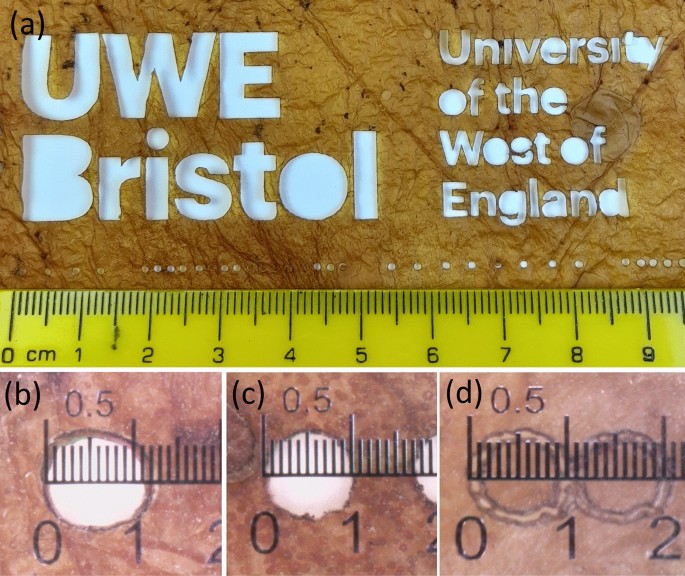
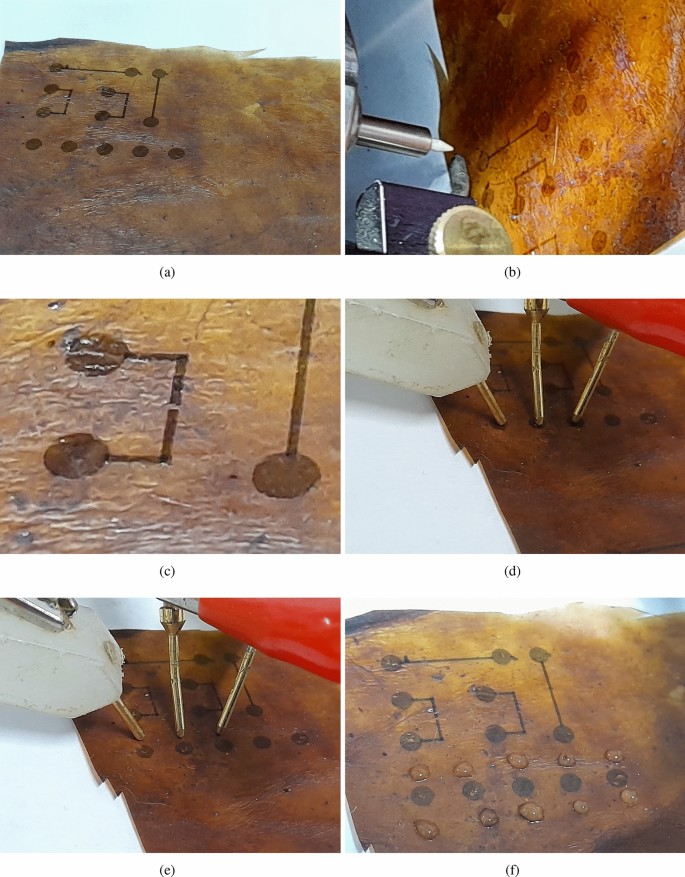
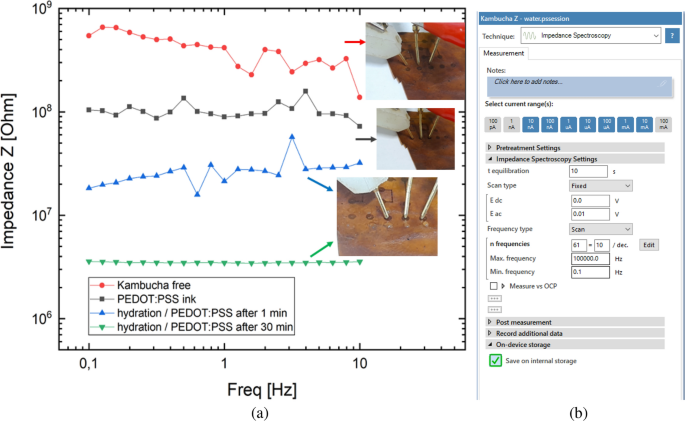
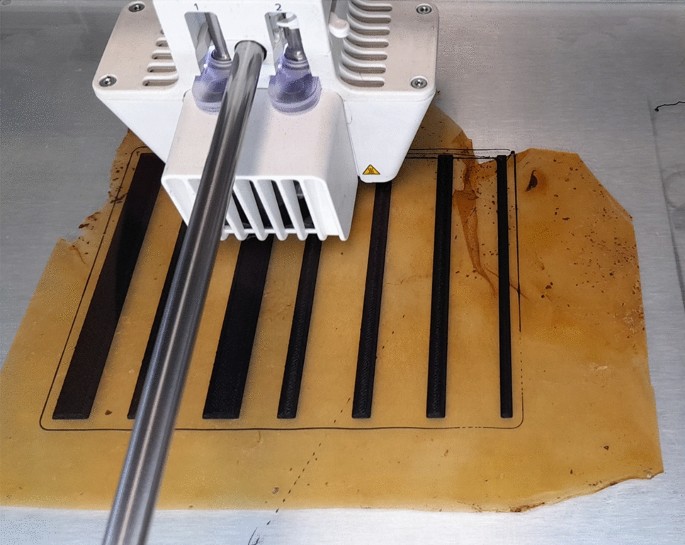
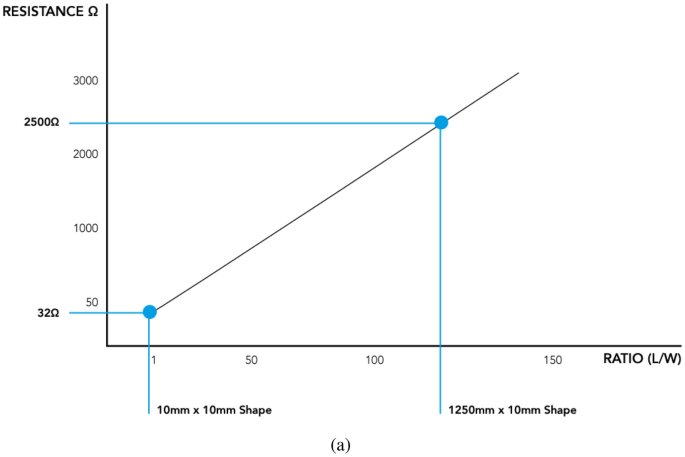
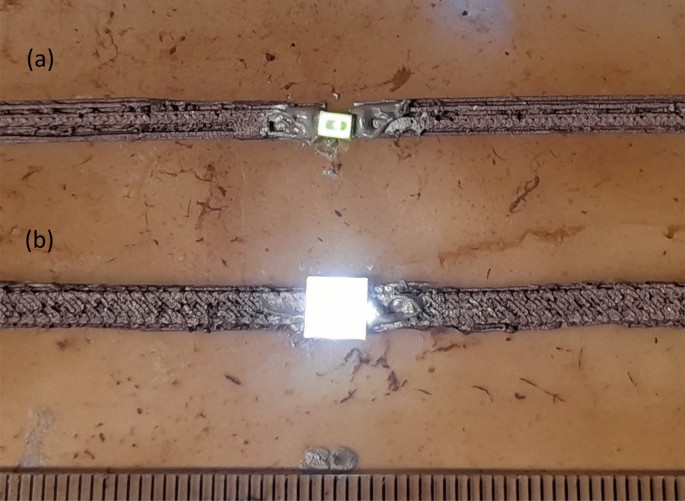

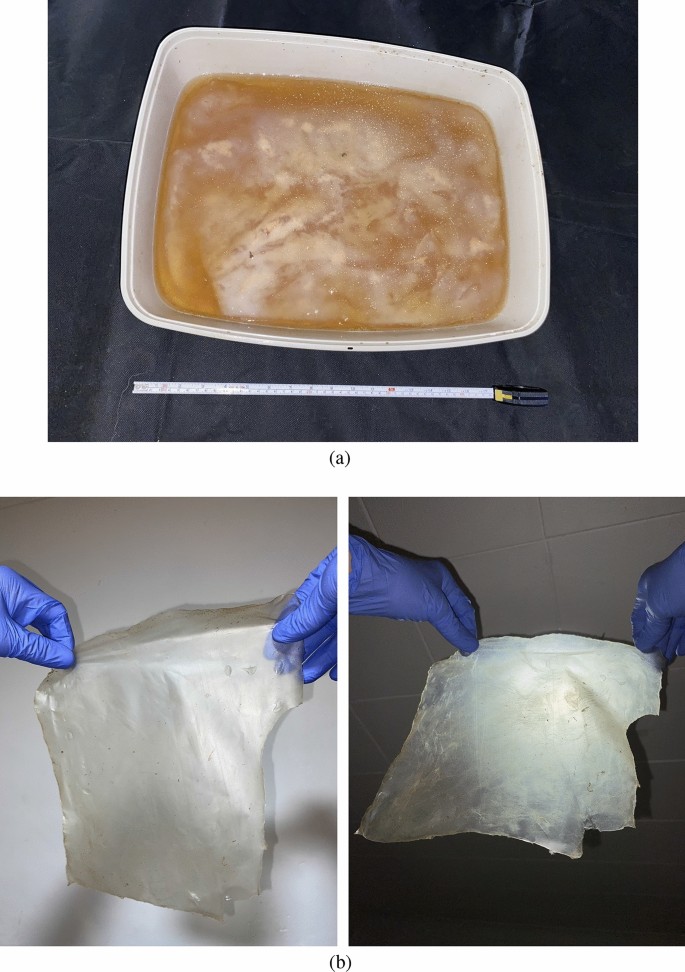














0 Response to "Kombucha electronics: electronic circuits on kombucha mats | Scientific Reports - Nature.com"
Post a Comment